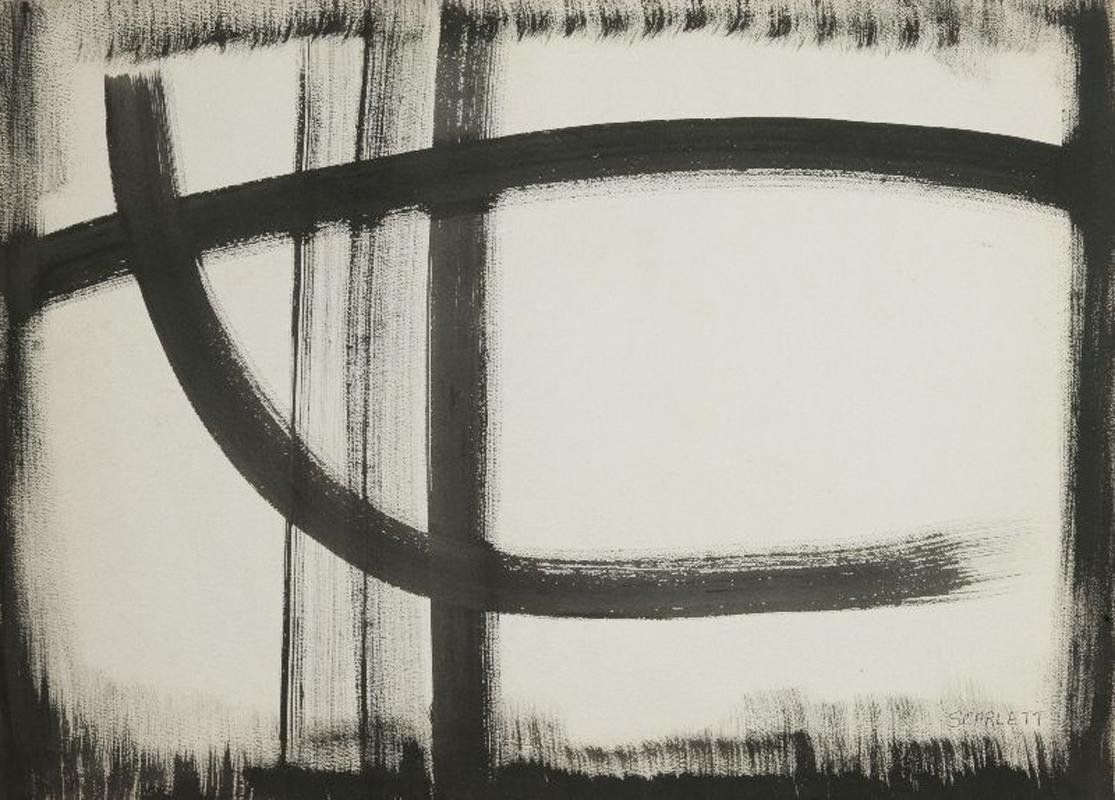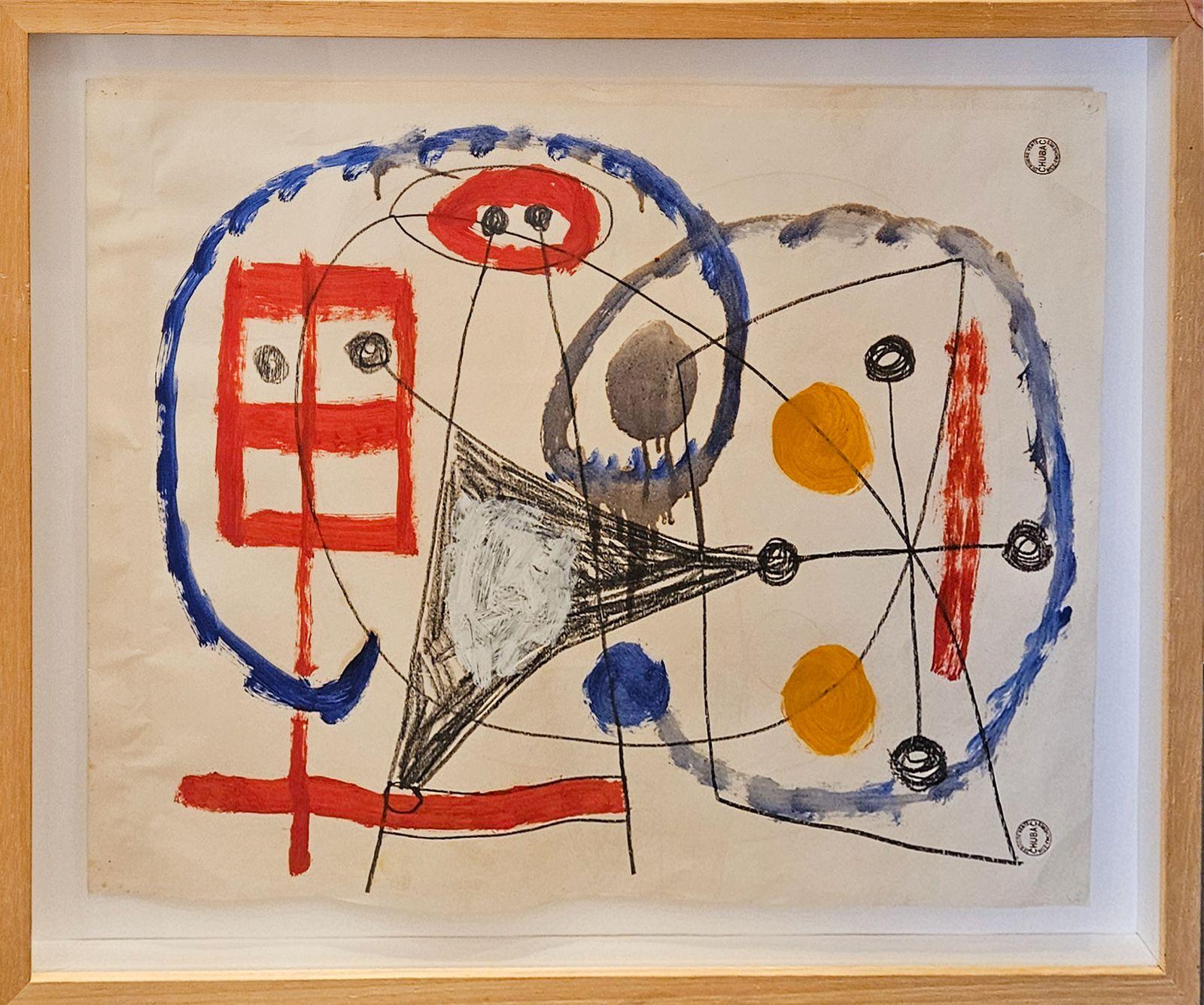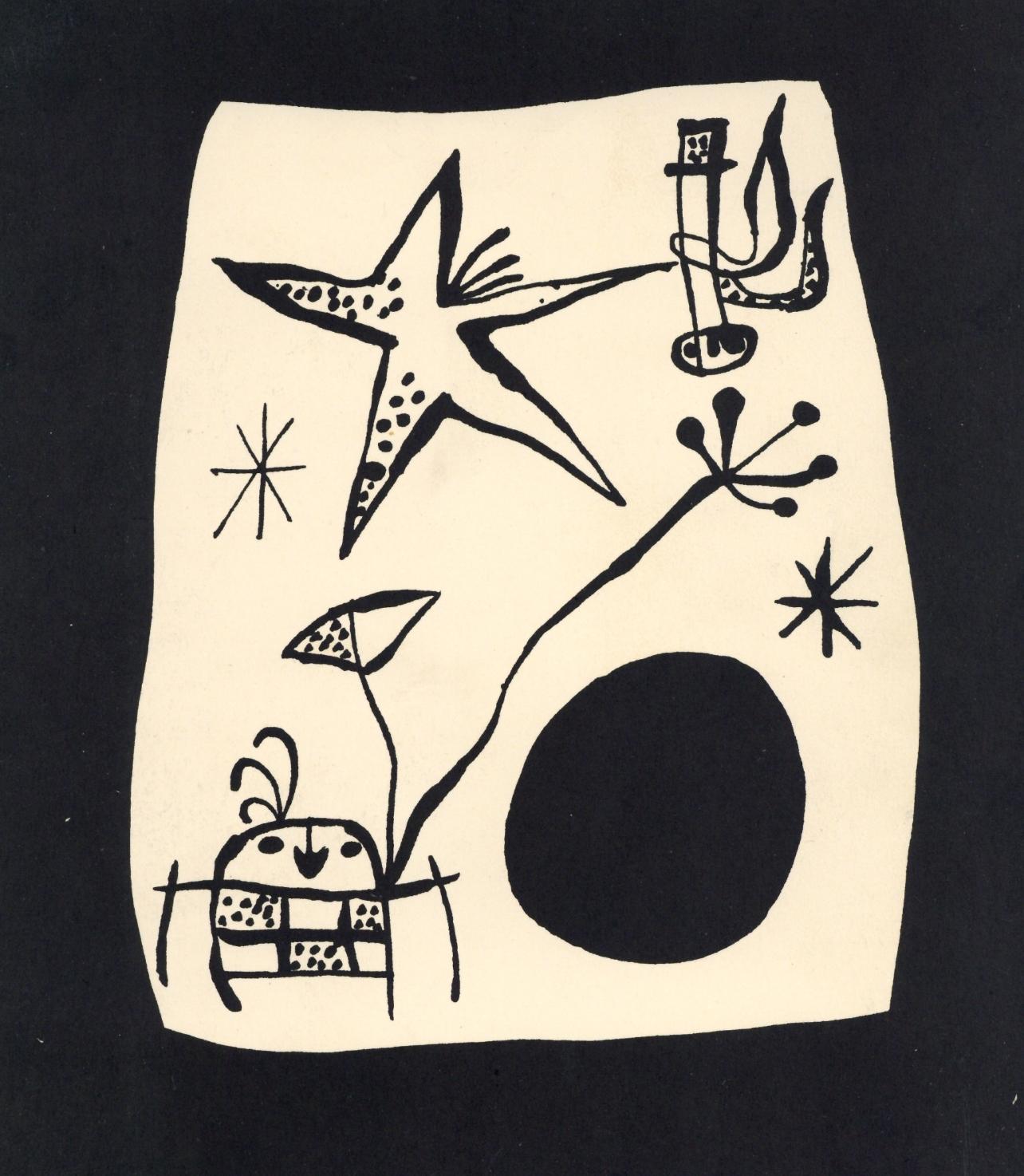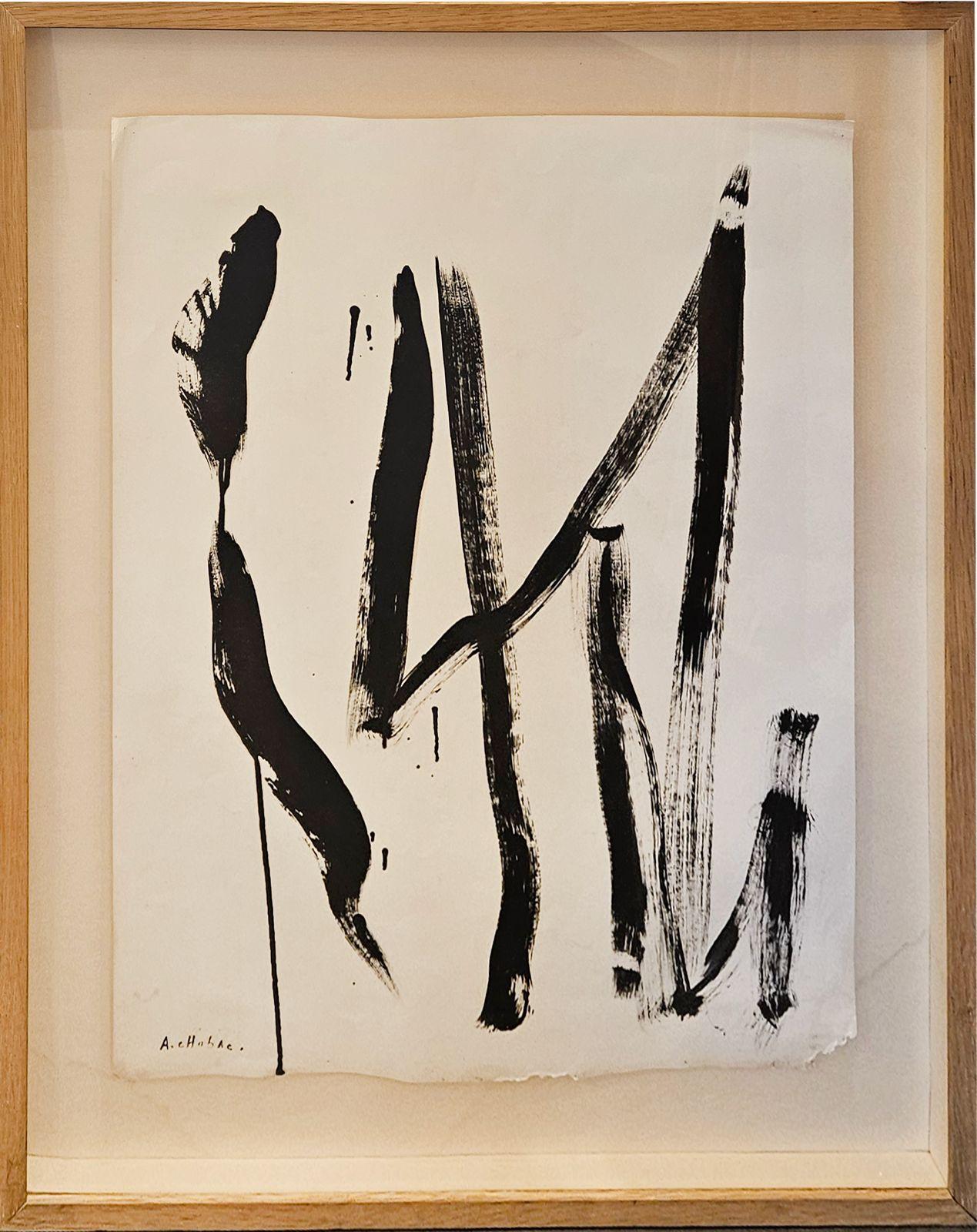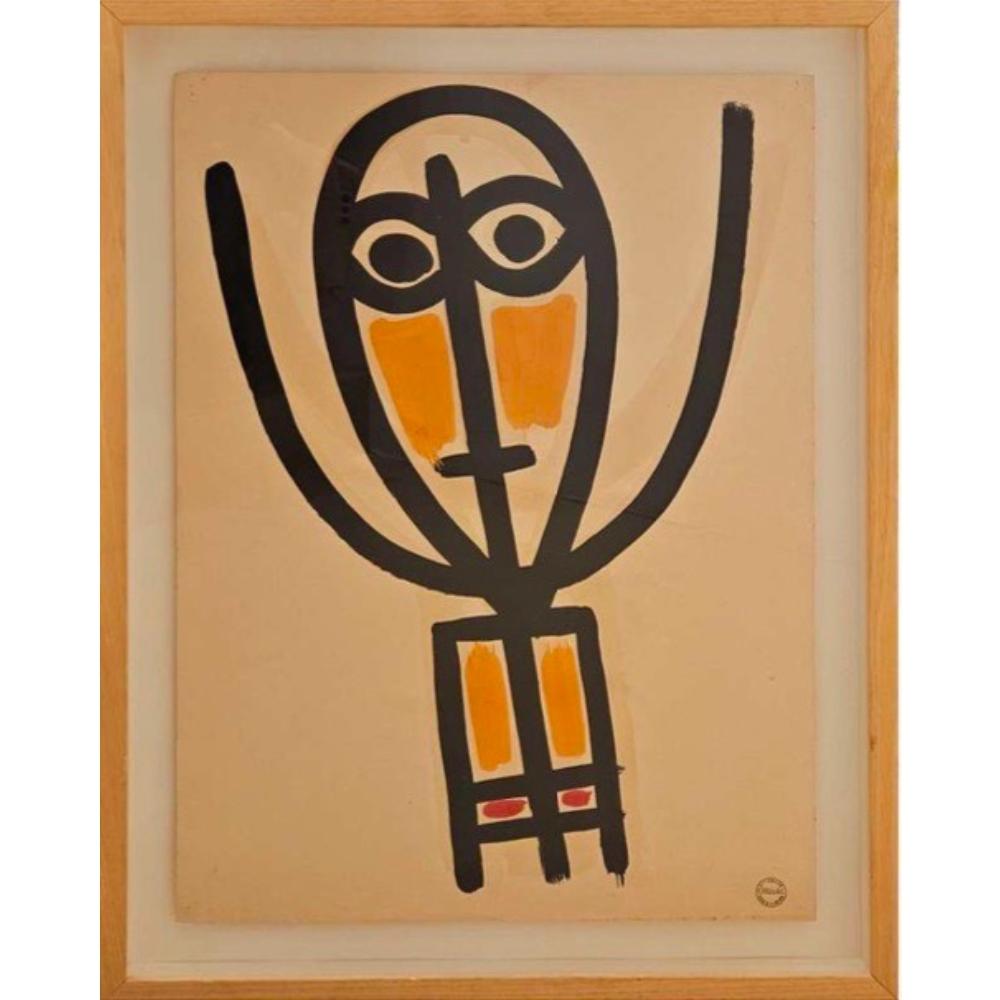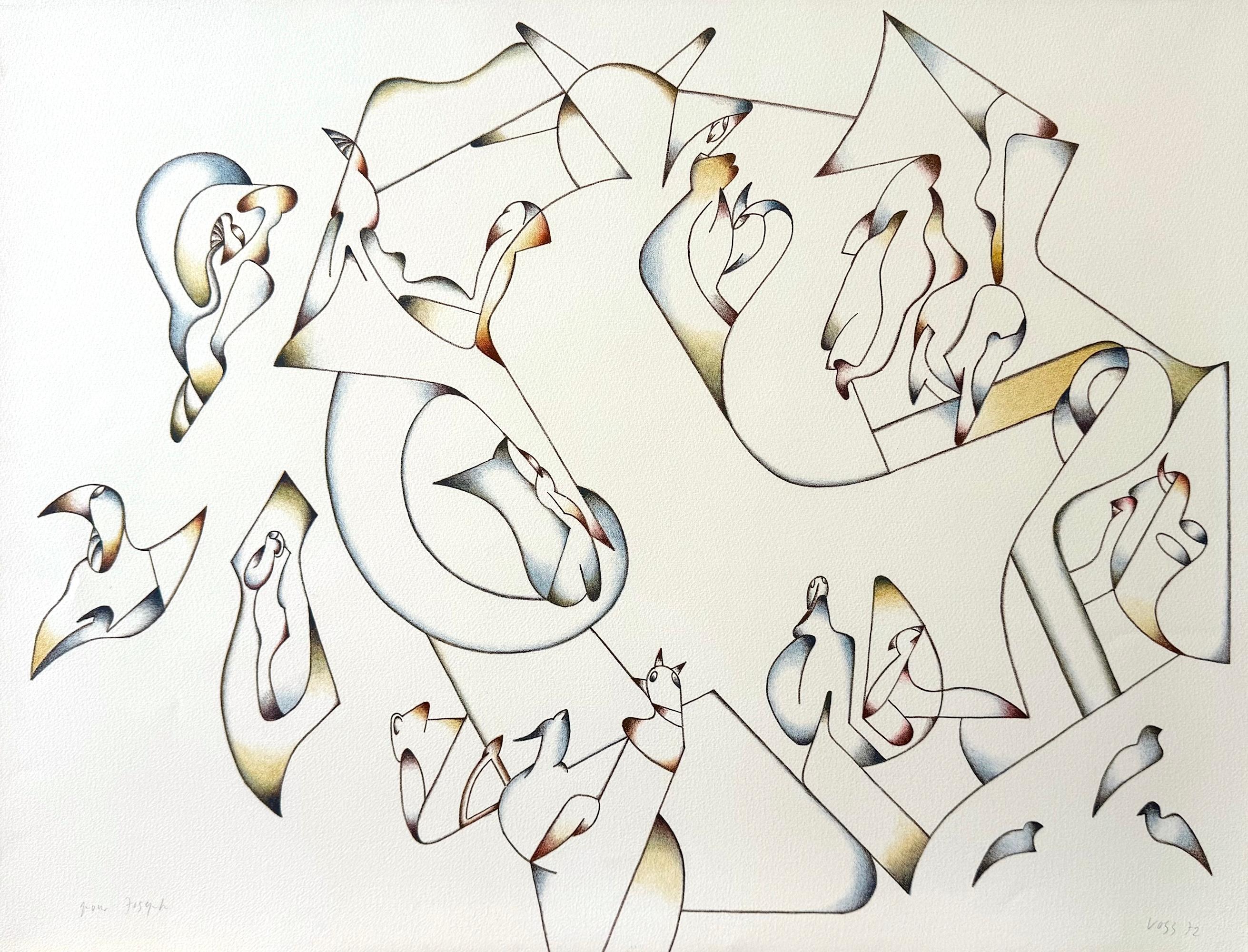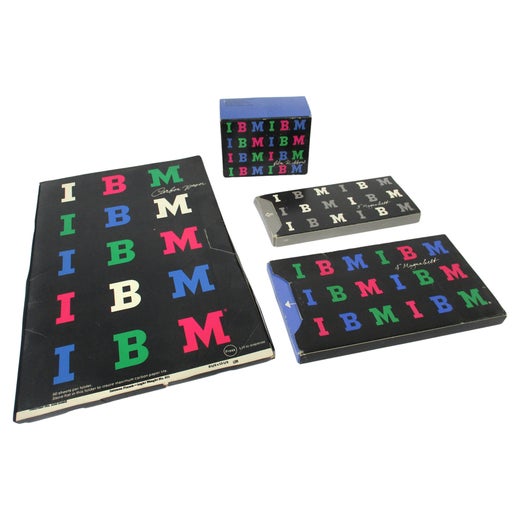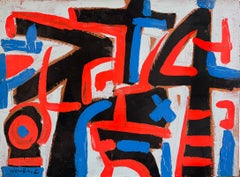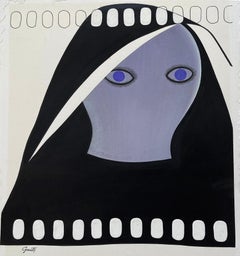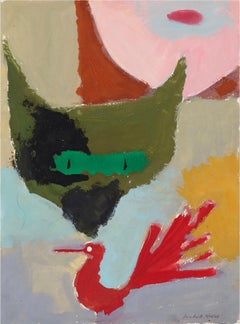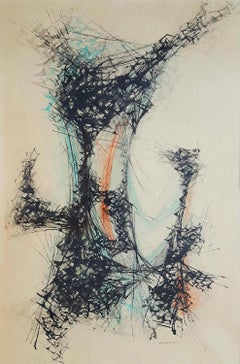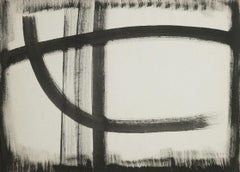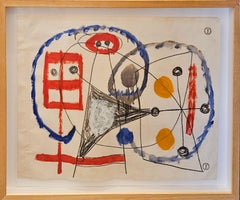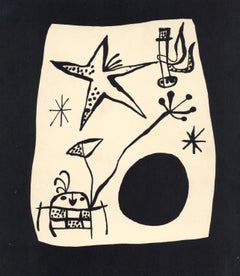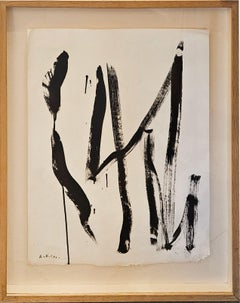Items Similar to Asian Calligraphic Shapes Over Biomorphic Forms
Want more images or videos?
Request additional images or videos from the seller
1 of 15
Paul RandAsian Calligraphic Shapes Over Biomorphic Forms1952
1952
$20,000
£15,093.45
€17,279.72
CA$28,206.63
A$30,967.36
CHF 16,155.74
MX$374,748.20
NOK 202,487.12
SEK 190,796.10
DKK 128,988.49
About the Item
Legendary Graphic designer Paul Rand was also a Fine Artist/Painter. In the present work, " Untitled: Asian Calligraphic Shapes Over Biomorphic Forms," Paul explores the relationship of hard-edge Asian-like Calligraphy superimposed on soft biomorphic forms. The Calligraphy appears to be executed with a brush on top of the soft glowing effects of an airbrush. Rand could also have meticulously created the biomorphic forms using a gentle rubbing technique. Executed in 1952, at the height of America's most important art movement, Abstract Expressionism, the present work speaks to the breakthrough painting style, techniques, and state of mind of the day. Yet, due to an incomplete historical analysis of the art period, Paul Rand seems to have left out the Abstract Expressionist conversation. In recent years, the art world has seen the meteoric rise of female Abstract Expressionists who were passed over. Could Paul Rand be next?
Live area is approximately 16 x 16. Sheet is 20 x 16 - Inventory or Production number in pencil on tissue overlay. M47974/4 - Provenance: The artist; Private collection. Stamped on Verso, Exlibris Paul Rand, Gift of the Artist
The uploaded video on 1stDibs is coming up a bit off color. Refer to the still images for more accurate color
- Creator:Paul Rand (1914 - 1996, American)
- Creation Year:1952
- Dimensions:Height: 16 in (40.64 cm)Width: 16 in (40.64 cm)
- Medium:
- Movement & Style:
- Period:
- Condition:Overall very good condition with saturated color. Some light creases outside the live area. Unframed,.
- Gallery Location:Miami, FL
- Reference Number:1stDibs: LU385315499292
Paul Rand
Paul Rand (born Peretz Rosenbaum; August 15, 1914 – November 26, 1996) was an American art director and graphic designer. He was best known for his corporate logo designs, including the logos for IBM, UPS, Enron, Morningstar, Inc., Westinghouse, ABC, and NeXT. He was one of the first American commercial artists to embrace and practice the Swiss Style of graphic design. Rand was a professor emeritus of graphic design at Yale University in New Haven, Connecticut where he taught from 1956 to 1969, and from 1974 to 1985. He was inducted into the New York Art Directors Club Hall of Fame in 1972.
Though Rand was a recluse in his creative process, doing the vast majority of the design load despite having a large staff at varying points in his career, he was very interested in producing books of theory to illuminate his philosophies. László Moholy-Nagy may have incited Rand's zeal for knowledge when he asked his colleague, at their first meeting, if he read art criticism. Rand said no, prompting Moholy-Nagy to reply "Pity."Steven Heller elaborates on this meeting's impact, noting; "from that moment on, Rand devoured books by the leading philosophers on art, including Roger Fry, Alfred North Whitehead, and John Dewey."These theoreticians would have a lasting impression on Rand's work; in a 1995 interview with Michael Kroeger discussing, among other topics, the importance of Dewey's Art as Experience, Rand elaborates on Dewey's appeal: [... Art as Experience] deals with everything — there is no subject he does not deal with. That is why it will take you one hundred years to read this book. Even today's philosophers talk about it[.] [E]very time you open this book you find good things. I mean the philosophers say this, not just me. You read this, then when you open this up next year, that you read something new. Dewey is an important source for Rand's underlying sentiment in graphic design; on page one of Rand's groundbreaking Thoughts on Design, the author begins drawing lines from Dewey's philosophy to the need for "functional-aesthetic perfection" in modern art. Among the ideas Rand pushed in Thoughts on Design was the practice of creating graphic works capable of retaining recognizable quality even after being blurred or mutilated, a test Rand routinely performed on his corporate identities. From: Wikipedia
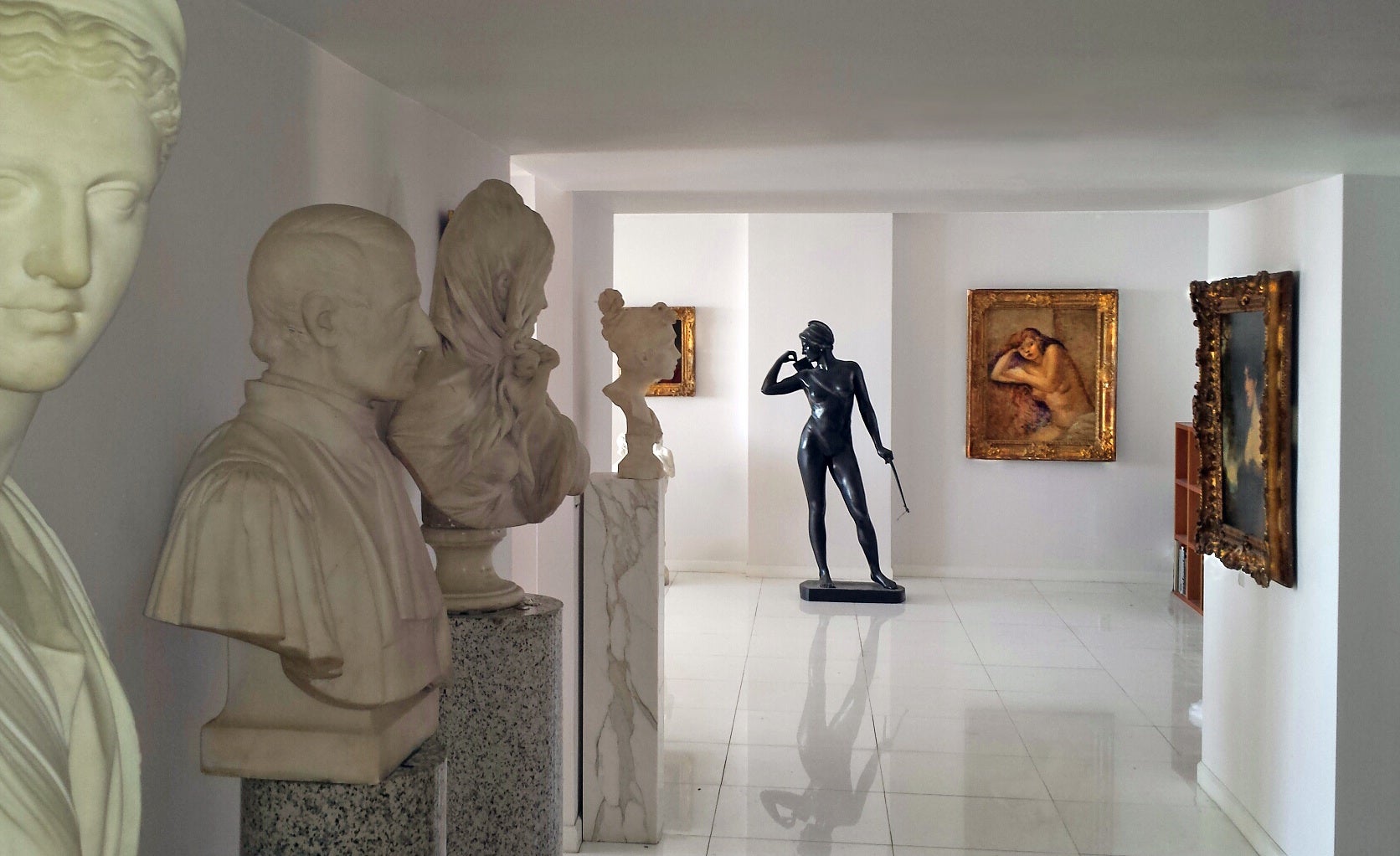
About the Seller
5.0
Gold Seller
Premium sellers maintaining a 4.3+ rating and 24-hour response times
Established in 2005
1stDibs seller since 2016
117 sales on 1stDibs
Typical response time: 1 hour
- ShippingRetrieving quote...Shipping from: Miami, FL
- Return Policy
Authenticity Guarantee
In the unlikely event there’s an issue with an item’s authenticity, contact us within 1 year for a full refund. DetailsMoney-Back Guarantee
If your item is not as described, is damaged in transit, or does not arrive, contact us within 7 days for a full refund. Details24-Hour Cancellation
You have a 24-hour grace period in which to reconsider your purchase, with no questions asked.Vetted Professional Sellers
Our world-class sellers must adhere to strict standards for service and quality, maintaining the integrity of our listings.Price-Match Guarantee
If you find that a seller listed the same item for a lower price elsewhere, we’ll match it.Trusted Global Delivery
Our best-in-class carrier network provides specialized shipping options worldwide, including custom delivery.More From This Seller
View AllAbstract Expressionist "Forms Divide" Like Franz Kline
By Emerson Woelffer
Located in Miami, FL
It's 1951. Who was doing painting like this? Franz Kline, Arshile Gorky, Jackson Pollock, Mark Rothko, Willem de Kooning, Adolph Gottlieb, Clyfford Still, Robert Motherwell, Lee Kra...
Category
1950s Abstract Expressionist Abstract Paintings
Materials
Masonite, Acrylic
The Last Snapshot - Minimalism
By George Giusti
Located in Miami, FL
This graphic and flatwork was an Interior illustration for the Saturday Evening Post.
George Giusti( Italian - American 1908-1990)- ''The Last Snapshot''- ink and acrylic on illust...
Category
1960s Abstract Geometric Portrait Paintings
Materials
Ink, Acrylic, Gouache
Untitled, Cat and Rooster
By Paul Rand
Located in Miami, FL
The work represents a wide eye cat staring at a rooster. The work is as simple as it's complex. The negative space is as important as the positive space. It's as sophisticated as it'...
Category
1940s Abstract Expressionist Animal Paintings
Materials
Acrylic, Pencil
Improversation #3 - Early Abstraction
By John Sennhauser
Located in Miami, FL
Signed and dated lower right;
inscribed, Dated and Signed on Verso
Provenance: Ashley John Gallery
Category
1950s Abstract Expressionist Abstract Drawings and Watercolors
Materials
Watercolor
Child-like Art - Child with Bull Horns in Boat with a Fish
By Paul Rand
Located in Miami, FL
Paul Rand is remembered as one of history's greatest and most famous graphic designers. He was also a painter. The fact that Paul Rand used Naïve Art in much of his corporate identit...
Category
1950s Outsider Art Portrait Paintings
Materials
Paper, Gouache
Biomorphic Forms - Early Abstract Expressionist - like Arshile Gorky
By Emerson Woelffer
Located in Miami, FL
It's 1945. What artists were making totally abstract, non-objective paintings like this? Work characterized by organic forms and flattened picture planes, with solid bold colors dr...
Category
1940s Abstract Expressionist Abstract Paintings
Materials
Canvas, Found Objects, Oil
You May Also Like
Untitled (Abstraction)
By Rolph Scarlett
Located in Fairlawn, OH
Untitled (Abstraction)
Ink on textured paper, c. 1958
Signed lower right "Scarlett" (see photo)
Condition: Excellent
Archival framing with OP3 Acrylic
Sheet size: 21 3/4 x 30 inches
Frame size: 28 1/2 x 36 1/2 inches
Note: A rare mid to late 1950s example of the artist's abstract expressionist style.
Provenance: estate of the artist
Private Collection, Hudson River Valley, New York
Rolph Scarlett
B. 1889, GUELPH, ONTARIO; D. 1984, WOODSTOCK, NEW YORK
Born on June 13, 1889 in Guelph, Canada, and into an artistic family, Rolph Scarlett spent his teenage years as an apprentice in his uncle’s jewelry firm and briefly studied at the Art Students League, New York. While working in the jewelry industry, Scarlett found time to paint and design theatrical sets in his free time, including one for the 1928 world premiere of Eugene O’Neill’s drama Lazarus Laughed (1926). In 1923, while on a business trip to Switzerland, Scarlett had met the artist Paul Klee and soon after abandoned his figurative painting style in favor of an abstract language that suggested more universal, cosmic truths.
In 1937, after permanently settling in New York, Scarlett became acquainted with the artist and curator Hilla Rebay, the first director of the Museum of Non-Objective Painting (renamed the Solomon R. Guggenheim Museum in 1952). Rebay provided Scarlett with a Guggenheim Foundation scholarship to paint full-time and obtained several of his paintings for the museum’s collection. From 1940 to 1946, Scarlett served as the museum’s chief lecturer, giving Sunday afternoon talks on art. Through Rebay, Scarlett became acquainted with the nonobjective works of Rudolf Bauer and Vasily Kandinsky and further refined his abstract style. Works from this era such as Yellow Bar (1942) are defined by overlapping geometric planes of bright, primary colors set against mute backgrounds. Scarlett avoided any reference to the outside world and believed that nonobjective painting was an act, in his words, of “pure creation.”
During his lifetime, solo shows of his work were held at the Jacques Seligmann Gallery, New York (1949); Sioux City Art Center, Iowa (1951); and Washburn Gallery...
Category
1950s Abstract Abstract Drawings and Watercolors
Materials
Ink
Sans titre
By Albert Chubac
Located in PARIS, FR
Magnificent abstract work on paper by Swiss artist Albert Chubac measuring 55.5 x 66.5 x 4 cm
Category
20th Century Modern Abstract Drawings and Watercolors
Materials
Paper, Acrylic
Miro, Composition (Mourlot 230; Cramer 39) (after)
By Joan Miró
Located in Southampton, NY
Lithograph on vélin paper. Inscription: Unsigned and unnumbered, as issued. Good Condition. Notes: From volume, Joan Miro by Jacques Prévert and Georges Ribemont-Dessaignes, 1956. Pu...
Category
1950s Surrealist Figurative Prints
Materials
Lithograph
Sans titre
By Albert Chubac
Located in PARIS, FR
Magnificent abstract work on paper by Swiss artist Albert Chubac measuring 65 x 82 x 3 cm
Category
20th Century Modern Abstract Drawings and Watercolors
Materials
Paper, Acrylic
Sans titre
By Albert Chubac
Located in PARIS, FR
Unique piece
framed
signed on right bottom
mixed media
Category
1960s Abstract Geometric Abstract Drawings and Watercolors
Materials
Mixed Media
ABSTRACT 2, Signed Lithograph, Modernist Drawing, Free Form Line and Shapes
By Jan Voss
Located in Union City, NJ
Abstract 2 is an original hand drawn lithograph by the German artist Jan Voss, printed using hand lithography techniques on archival Arches paper 100% acid free. Abstract 2 presents ...
Category
1970s Abstract Abstract Prints
Materials
Lithograph
